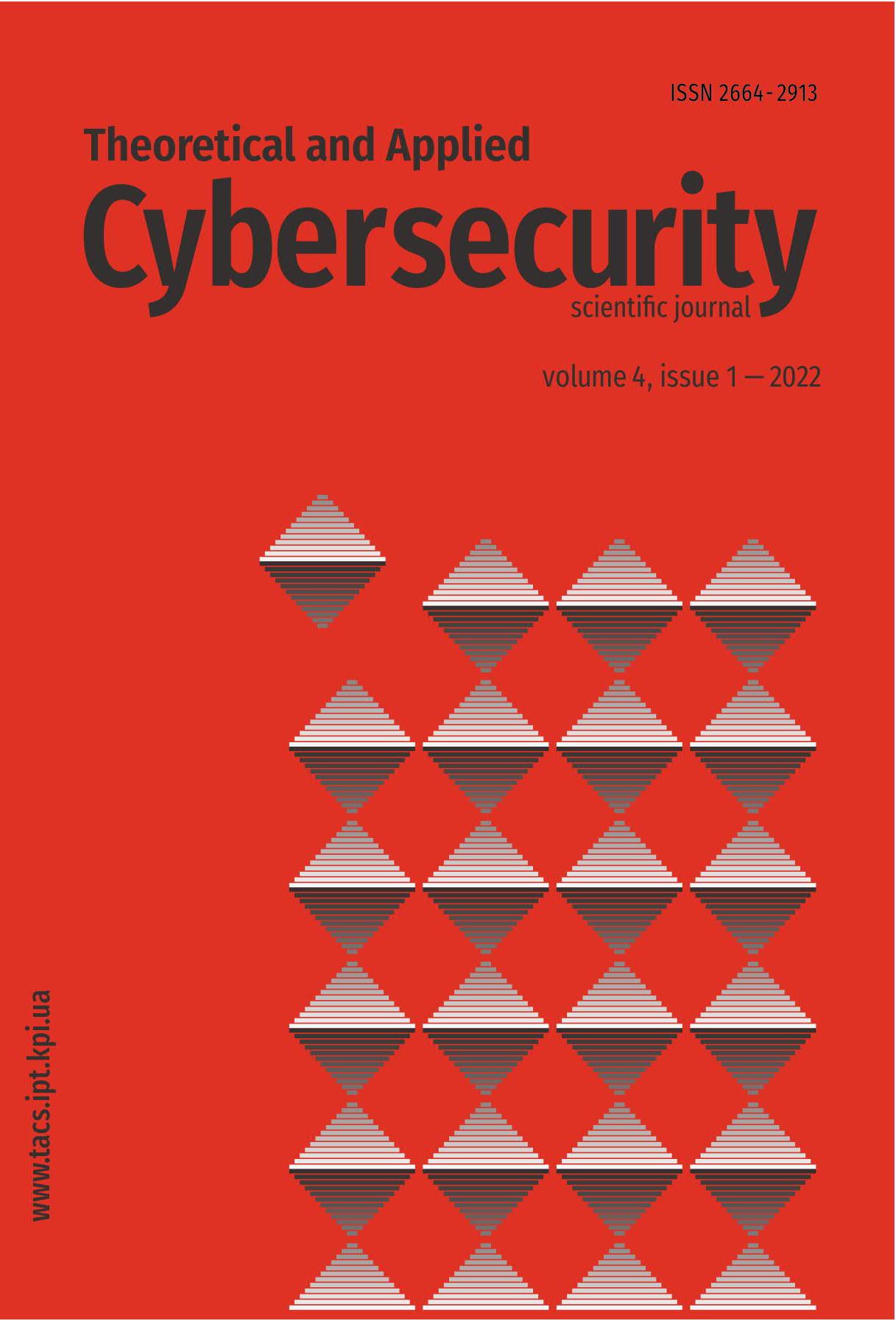Destruction of stego images formed by adaptive embedding methods with dictionary learning methods
DOI:
https://doi.org/10.20535/tacs.2664-29132022.1.254883Abstract
Counteraction to sensitive information leakage that processed by state and private organizations is topical task today. Of special interest are methods for prevention data leakage by usage of hidden (steganographic) communication channels by attackers. Despite wide range of proposed steganalysis methods for detection of embedded messages, theirs performance highly depends on prior information about used embedding methods. As an example, we may mention modern stegdetectors for digital images, which are based on cover rich models and deep convolutional neural networks. Therefore, the stego image destruction methods are widely applied as preventive action.
Modern methods for stego image destruction are based on widespread image denoising methods, like median filter and lossy compression. The limitation of such methods is significant changes of image's statistical features that may disclosure the steganalysis process to attacker. Therefore, development of stego images processing methods that provide reliable destruction of embedded data, and preserving cover image statistical features is needed. The paper is aimed at performance evaluation of applying the novel methods of spectral analysis, namely dictionary learning, for solving this tasks. The obtained results showed limitation of state-of-the-art methods for destruction of stego image formed by adaptive embedding methods, namely considerable changes of image's statistical parameters. The proposed method allows preserving both minimal changes of a \ac{ci} parameters, and ratio of survived bits of embedded message (less than $7\%$). This makes proposed solution an attractive candidate for reliable destruction of stego images formed by novel embedding methods. However, practical usage of proposed solution requires further improvement of dictionary learning methods, namely decreasing of computation complexity of dictionary forming procedure.
Downloads
Published
Issue
Section
License
Authors who publish with this journal agree to the following terms:
Authors retain copyright and grant the journal right of first publication with the work simultaneously licensed under a Creative Commons Attribution License that allows others to share the work with an acknowledgement of the work's authorship and initial publication in this journal.
Authors are able to enter into separate, additional contractual arrangements for the non-exclusive distribution of the journal's published version of the work (e.g., post it to an institutional repository or publish it in a book), with an acknowledgement of its initial publication in this journal.
- Authors are permitted and encouraged to post their work online (e.g., in institutional repositories or on their website) prior to and during the submission process, as it can lead to productive exchanges, as well as earlier and greater citation of published work (See The Effect of Open Access).

